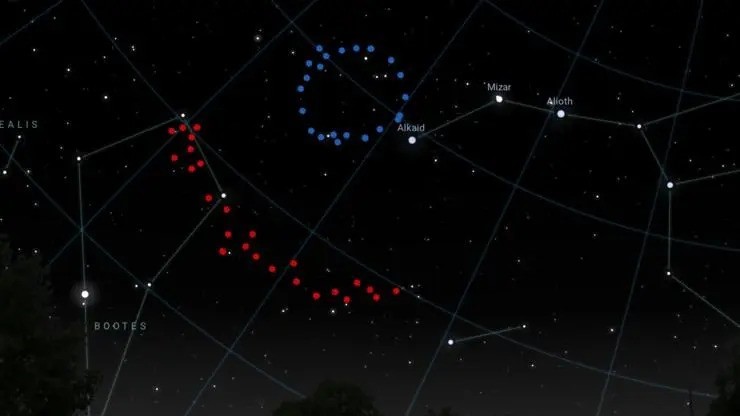
Astronomers have discovered a cosmic "ring" that's so enormous, it defies explanation with our best theories of the universe.
Named the Big Ring, the gigantic spiral of galaxies and galaxy clusters is 1.3 billion light-years wide and has a circumference of 4 billion light-years, making it one of the largest objects ever seen.
Because the Big Ring is so far from Earth — 9 billion light-years away — its light is too dim to be viewed with the naked eye. But if it were brighter, it would appear 15 times the size of the full moon in the night sky.
Related: After 2 years in space, the James Webb telescope has broken cosmology. Can it be fixed?
The ring was found close to the constellation Boötes near the 3.3 billion-light-year-wide Giant Arc, which was discovered by the same team in 2021.
"Neither of these two ultra-large structures is easy to explain in our current understanding of the universe," study first author Alexia Lopez, a doctoral candidate at the University of Central Lancashire in the U.K., said in a statement. "And their ultra-large sizes, distinctive shapes, and cosmological proximity must surely be telling us something important — but what exactly?"
Both the Big Ring and the Giant Arc are so large they could lead astronomers to throw out old models of the universe's birth and evolution. The researchers presented their findings Thursday (Jan. 11) at the 243rd meeting of the American Astronomical Society in New Orleans.
According to the cosmological principle, if you zoom out far enough on our universe, it will all start to look more or less the same. This is because the laws of physics are assumed to be identical throughout the cosmos, acting equally on all the clumps of matter found within it. This sets a hard upper limit (roughly 1.2 billion light-years) on how big the structures found inside the universe can be.
But by analyzing data taken from the Sloan Digital Sky Survey, which studies galaxies illuminated by powerful quasars bursts, the researchers teased apart the evidence for a ring far bigger than the theoretical upper size limit — a stunning coil-like structure aligned face-on with Earth.
"The Big Ring and Giant Arc are the same distance from us, near the constellation of Boötes the Herdsman, meaning they existed at the same cosmic time when the universe was only half of its present age," Lopez said. "They are also in the same region of sky, at only 12 degrees apart when observing the night sky …. [This] raises the possibility that together they form an even more extraordinary cosmological system."
Although the cause of the gigantic structure is unclear, the researchers first speculated that it could be a remnant of a baryon acoustic oscillation (BAO), a type of sound wave that rippled through the hot plasma of the early universe. Yet further analysis found that the Big Ring was too large and, due to its corkscrew shape, not spherical like BAOs. Alternative explanations suggest that it could possibly be a cosmic string, a hypothetical clumping of matter created in the early universe, or a remnant of something else that could demand an entirely new model to explain it.
"The Big Ring and the Giant Arc, both individually and together, gives us a big cosmological mystery as we work to understand the universe and its development," Lopez said.







